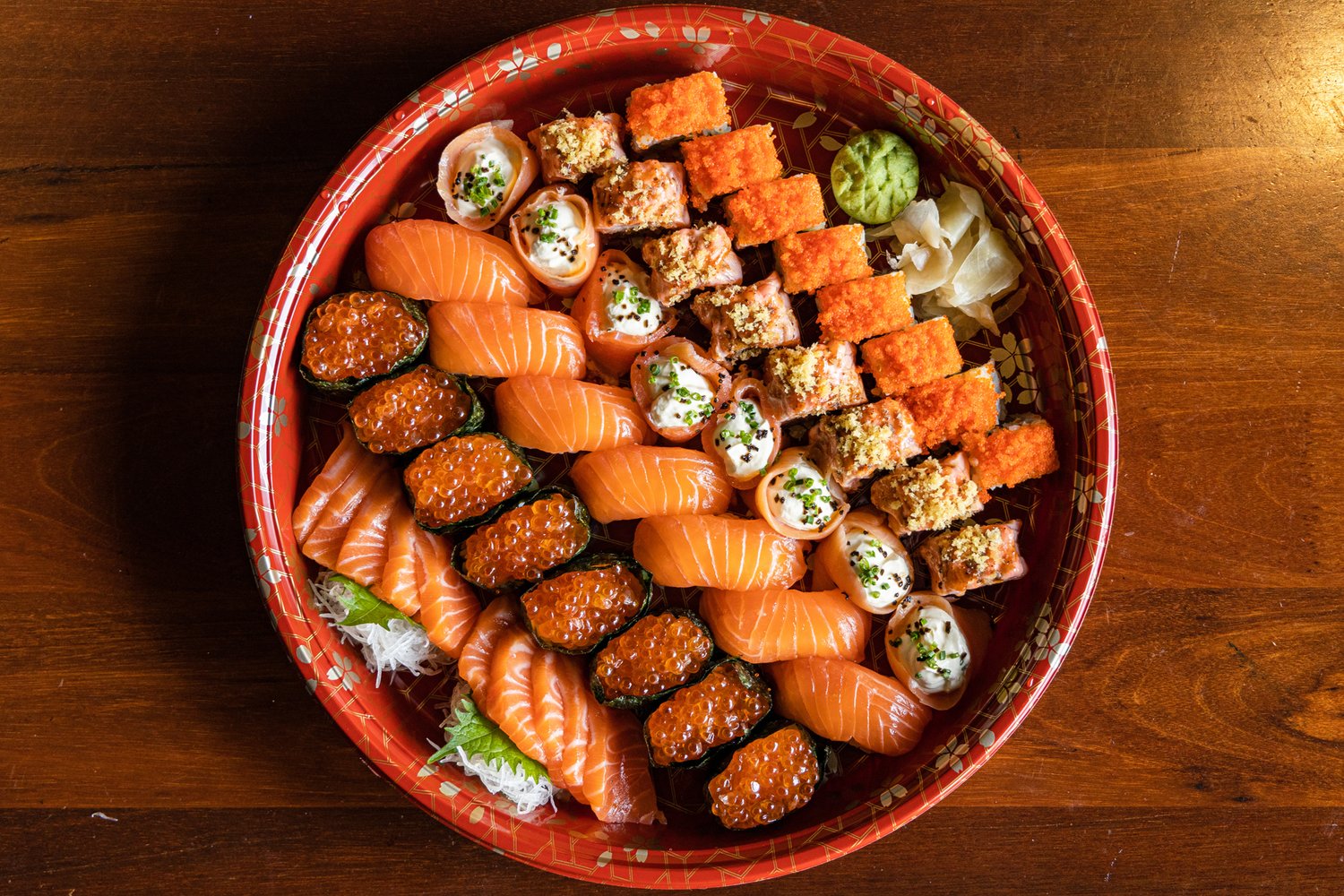
Sushi Order Topped With Salmon NYT Clue Solved in Style
Crossword puzzles have long been a favorite pastime for millions of people worldwide. Whether you’re a casual player or a devoted puzzler, the New York Times Crossword (NYT) often provides an engaging challenge with clever wordplay and cultural references. One clue that has recently sparked curiosity is the phrase “sushi order topped with salmon nyt”—a fun yet puzzling clue that has left solvers scratching their heads.
In this comprehensive article, we’ll break down the meaning behind the clue, analyze its crossword context, explore sushi terminology, and help readers better understand how to approach similar NYT-style puzzles. Along the way, we’ll look at why this clue is trending and how its clever construction blends food culture with wordplay. Whether you’re solving or simply searching, this article is your guide to understanding the sushi-themed puzzle mystery.
Understanding the NYT Crossword Clue: Sushi Order Topped With Salmon
When a clue like “sushi order topped with salmon“ appears in the NYT crossword, it’s essential to recognize that it’s not always literal. NYT crossword clues often involve puns, double meanings, or indirect hints that require more than a surface-level interpretation.
So, what does this clue mean?
The key lies in parsing the phrase. In sushi terms, “topped with salmon” typically refers to nigiri—a type of sushi consisting of a hand-formed mound of rice with a slice of raw fish (often salmon) placed on top. This points directly to the possible answer: “nigiri.”
This six-letter word fits standard crossword formats and aligns perfectly with the description. It’s not just a dish—it’s a brilliant example of how the New York Times uses culinary knowledge and cultural references to craft engaging crossword puzzles.
Why “Nigiri” Is the Likely NYT Answer
If you’ve been trying to solve the clue “sushi order topped with salmon nyt,” the most fitting solution is nigiri, and here’s why:
- Literal Fit: Nigiri sushi matches the description—it’s a sushi order topped with salmon or another fish.
- Clue Construction: The phrase is precise but broad enough to mislead casual solvers, which is typical of NYT crossword writing.
- Common Knowledge: Nigiri is a well-known sushi term that appears in food culture and menus worldwide, making it a fair clue/answer pair.
- Crossword Symmetry: The word length and vowel/consonant balance of “nigiri” work well with crossing words in most NYT puzzles.
So, if you’re stuck on this crossword clue and all letters align, “nigiri” is the most likely solution.
A Closer Look at Sushi Terminology
To fully appreciate this clue, it helps to know a bit about sushi. Let’s explore the sushi landscape and how different types can be used in crossword puzzles.
1. Nigiri
As mentioned, this is a simple piece of sushi: vinegared rice hand-molded with a slice of fish or seafood on top. Salmon nigiri is especially popular, making it a familiar image for most people.
2. Maki
These are rolled sushi, usually wrapped in seaweed and sliced into bite-sized pieces. Although make can contain salmon, it isn’t usually “topped” with salmon—so it’s less likely to be the answer to the NYT clue.
3. Sashimi
Sliced raw fish without rice. While salmon sashimi is standard, it doesn’t fit the “sushi order topped with” language since there’s no rice base.
4. Temaki
These hand-rolled cones of seaweed filled with rice and fish may include salmon, but again, the presentation doesn’t match the clue’s wording as closely as nigiri.
Understanding these distinctions helps solvers eliminate incorrect options and zero in on the correct answer.
How the NYT Uses Food Clues Creatively
The New York Times Crossword frequently taps into food-related clues because they are relatable, visual, and diverse. From ingredients and cooking terms to international cuisine and trendy dishes, the crossword embraces culinary language as a clever tool for misdirection or education.
“Sushi order topped with salmon” is a perfect example. On the surface, it seems simple. But solving it requires not only a love for crosswords but also a bit of food literacy. That’s the genius behind NYT clues—blending everyday knowledge with cultural references elegantly and playfully.
Why This Clue Is Trending
The search term “sushi order topped with salmon nyt” has spiked in popularity recently due to its appearance in a widely played daily puzzle. Here’s why it resonated:
- The universal appeal of sushi: Sushi is now a mainstream food globally, making it familiar to many.
- Challenging but fair clue: It’s not obscure, yet it’s not immediately obvious—ideal for an “aha!” moment.
- High engagement online: Solvers often search for answers to tricky clues, and this one struck the right balance of difficulty and curiosity.
With crossword culture growing and more people participating daily, searchable clue-based content has become a valuable SEO opportunity.
How to Improve at Solving Clues Like This
Getting better at solving NYT clues requires a blend of strategies. Here’s how you can approach sushi-themed or food-related clues more effectively:
1. Learn Common Food Terms
Knowing terms like “nigiri,” “umami,” or “soba” can give you an edge. These appear frequently in crosswords due to their concise spelling and vowel-rich structure.
2. Think Figuratively
NYT clues often use metaphors or indirect descriptions. Always ask yourself: “Could this be a pun or a play on words?”
3. Practice Lateral Thinking
Don’t take clues at face value. For example, “topped with salmon” isn’t just about food—it’s about positioning (what’s on top of what).
4. Cross-reference Clues
Use crossing words to your advantage. If you’re unsure of “nigiri,” but four down confirms the “G,” you can build confidence in your guess.
5. Read Food Blogs or Menus
Yes, even casually scanning sushi restaurant menus can improve your crossword game. Exposure builds recall.
Conclusion
The NYT clue “sushi order topped with salmon” is a masterful example of crossword elegance. While simple on the surface, it challenges solvers to engage with food culture, vocabulary, and logic all at once. With “nigiri” being the likely answer, we see how the New York Times cleverly blends everyday knowledge with wordplay that keeps fans coming back.
Whether you’re solving crosswords for fun or diving into them to improve mental agility, clues like this provide both a satisfying challenge and a gentle nudge into new knowledge. And next time you order sushi, you might smile when the nigiri arrives—a crossword solved in real life.
FAQs
1. What is the answer to “sushi order topped with salmon” in the NYT crossword?
The most likely answer is nigiri, a common sushi type.
2. Why does the NYT use food clues like this?
Food clues are relatable, visual, and excellent for clever wordplay.
3. Is “nigiri” a sushi roll?
No, nigiri is hand-pressed rice topped with fish—typically salmon.
4. How often do food clues appear in NYT puzzles?
Very often, especially on weekdays when solvers expect a fun challenge.
5. Where can I practice similar crossword clues?
Try NYT archives or apps like Crossword Club and Wordplay NYT.



